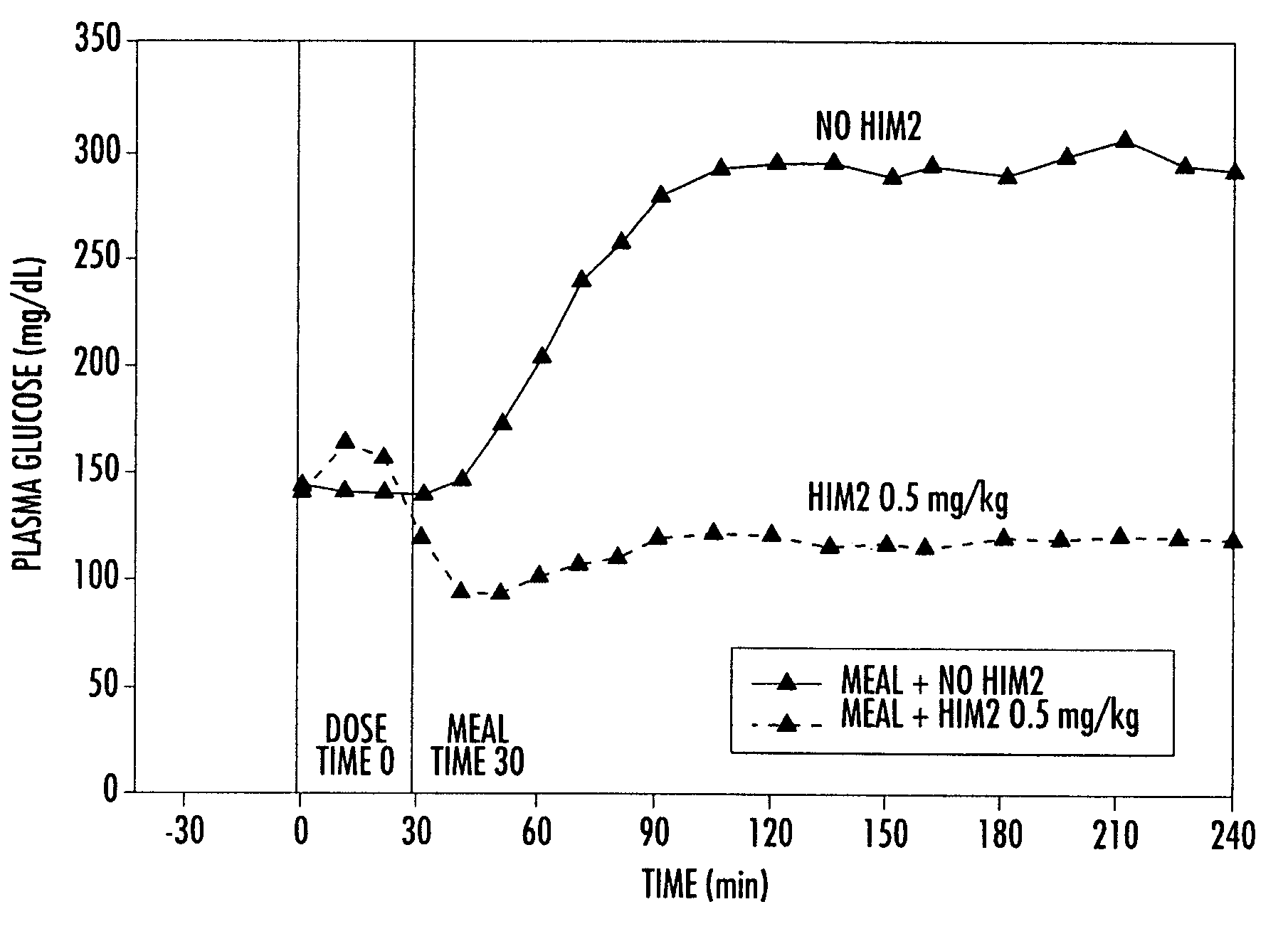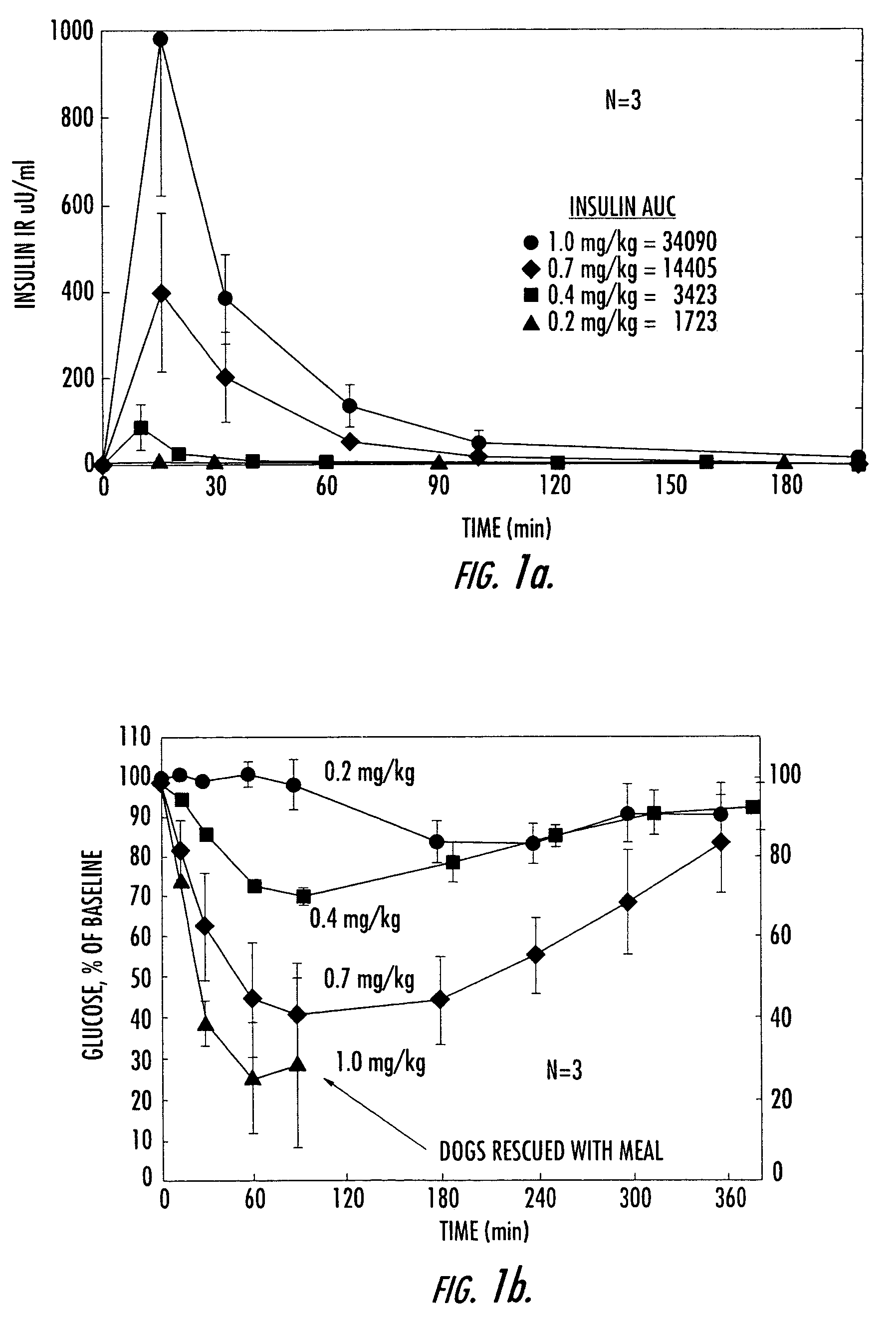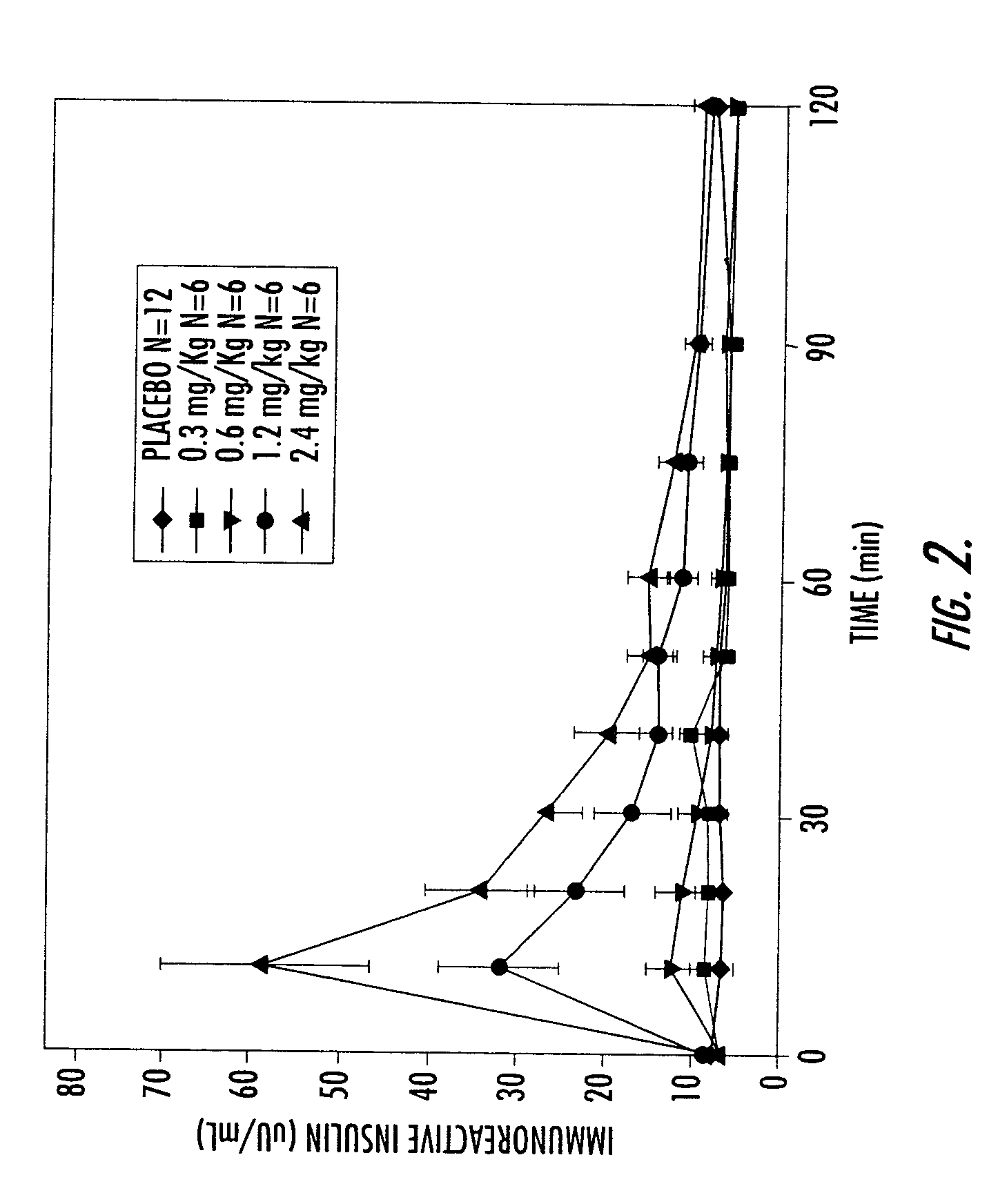Methods of treating diabetes mellitus
a diabetes mellitus and diabetes mellitus technology, applied in the field of diabetes mellitus treatment, can solve the problems of unfulfilled effectiveness, diabetes individuals also have a higher probability of developing life-threatening macrovascular diseases, and many life-threatening complications, and achieve the effect of effective treatment and rapid and convenient insulin delivery
- Summary
- Abstract
- Description
- Claims
- Application Information
AI Technical Summary
Benefits of technology
Problems solved by technology
Method used
Image
Examples
example 1
[0154]Numerous studies in both pancreactomized and normal, fasted dogs have shown that orally administered, conjugated insulin is rapidly absorbed in a dose-dependent manner and is associated with concomitant dose-dependent glucose-lowering effects. FIGS. 1a and 1b demonstrate these effects after various oral doses of HIM2 in pancreactomized dogs. At the highest dose of HIM2 studied, 1.0 mg / kg, all of the dogs required glucose rescue because of marked, symptomatic hypoglycemia.
example 2
[0155]A Phase I study in healthy volunteers was conducted. This study utilized an earlier, less purified (and, therefore, less active) form of conjugated insulin (hexyl insulin mixture, HIMX). HIMX is approximately five times less active than the more purified HIM2; therefore, a 2.4 mg / kg dose of HIMX is approximately equivalent to a 0.5 mg / kg does of HIM2. HIMX was administered in the fasting state at four different dose levels, after which peripheral insulin and glucose concentrations were measured. As shown in FIG. 2, insulin concentrations reached peak levels (Cmax) in the physiological range at 10–15 minutes after oral dosing of HIMX (4 ml dose volume) and were dose dependent. When a larger dosing volume (20 ml) was utilized for the same doses, the resulting insulin Cmax at all doses was significantly higher, demonstrating a marked influence of formulation volume on absorption (FIG. 3a). FIG. 3b shows the plasma glucose values seen after the 20 ml dose volume, confirming the do...
example 3
[0156]The objectives of this study in Type 1 diabetic patients were to: 1) determine the safety and tolerance of escalating doses of orally administered HIM2; 2) estimate the kinetics of HIM2 after oral dosing compared with subcutaneous dosing with regular insulin and placebo and 3) evaluate the pharmacodynamics of HIM2 compared with subcutaneous insulin using blood glucose as the marker of drug effect.
[0157]This was a randomized, double-blind, three-dose plus active (subcutaneous insulin) control, double-dummy, placebo-controlled, five-period, cross-over study. After an overnight fast during which euglycemia was maintained by intravenous insulin administration, the insulin was then discontinued, and, after a 2 hour washout period, single doses of oral placebo or HIM2 (0.15, 0.3, and 0.6 mg / kg), and subcutaneous regular insulin (4 IU) or insulin placebo, were administered to patients in a randomized fashion as shown in Table 1 below. Plasma glucose and insulin levels were then measu...
PUM
| Property | Measurement | Unit |
|---|---|---|
| volume | aaaaa | aaaaa |
| volume | aaaaa | aaaaa |
| time | aaaaa | aaaaa |
Abstract
Description
Claims
Application Information
 Login to View More
Login to View More - R&D
- Intellectual Property
- Life Sciences
- Materials
- Tech Scout
- Unparalleled Data Quality
- Higher Quality Content
- 60% Fewer Hallucinations
Browse by: Latest US Patents, China's latest patents, Technical Efficacy Thesaurus, Application Domain, Technology Topic, Popular Technical Reports.
© 2025 PatSnap. All rights reserved.Legal|Privacy policy|Modern Slavery Act Transparency Statement|Sitemap|About US| Contact US: help@patsnap.com



